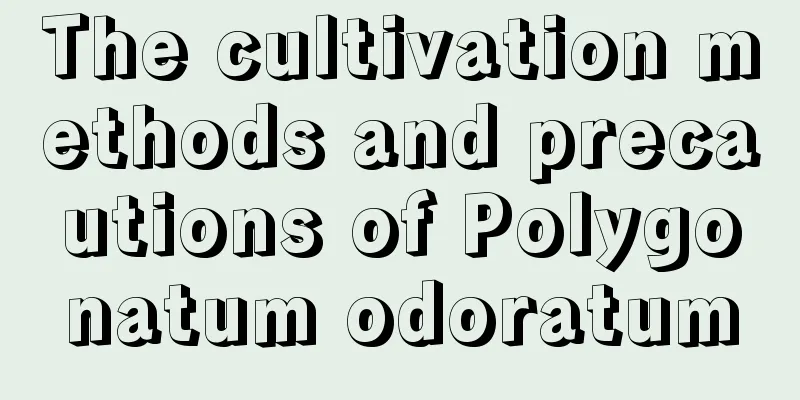The cultivation methods and precautions of Polygonatum odoratum

How to cultivate Polygonatum odoratumSoil requirementsIt is best to choose a slightly acidic sandy soil with deep soil layer, good drainage and sunny orientation for growing Polygonatum odoratum. When planting and cultivating, pay attention to replacing the soil. Change the soil about once every year to ensure the nutrients needed for growth. Selection of stemsWhen cultivating Polygonatum odoratum, first choose to use underground rhizomes for reproduction. After preparing the rhizomes, be sure to spread the root buds in a cool, sheltered place indoors for maintenance. Seed germinationBefore germinating the seeds of Polygonatum odoratum, you should soak them in cold water for 24 hours, then take them out and drain the water. Then put the seeds into a wooden box for cultivation, and then place them about 5 cm away from wet sand and wait for them to germinate and grow. Planting and breedingPlanting is generally done from early to late October, and it is best to choose a cloudy or sunny day to plant, which can promote the growth and germination of new seedlings. During this period, pay attention to keeping warm, watering, and ensuring the moisture of the soil. Also provide enough light. Notes on the cultivation of Polygonatum odoratumWinter protectionAlthough Polygonatum odoratum is cold-resistant, the weather is too cold in winter, so you still need to pay attention to cold protection to avoid frostbite and inability to grow. Fertilization and topdressingPolygonatum odoratum likes fertile soil, so it is necessary to fertilize it on time and in the right amount to supplement sufficient nutrients to facilitate the growth of the plant. Not only should we apply fertilizer, but we should also pay attention to top dressing. This is especially true during the seedling period. However, please note that if enough base fertilizer has been applied, there is no need to apply top dressing to avoid burning the roots. Pay attention to pest controlThe main diseases of Polygonatum odoratum include leaf spot, root rot, gray spot, etc. Pay attention to spraying with drugs for prevention and control. Pests include white grubs. The method of prevention and control is to use 1000~1500 times the concentration of 90% crystal dichlorvos to water the soil around the roots until the pests are killed. |
<<: Difference Between Lavender and Verbena
>>: The difference between dripping Guanyin and calla lily
Recommend
Can the fortune tree be exposed to the sun or placed on the windowsill?
1. Can it be exposed to the sun? When the sunligh...
Is Gardenia poisonous?
1. Is it poisonous? No, this flower has a fragran...
Rose cutting method
1. Prepare flower soil When planting rose cutting...
How to fertilize plum blossoms? What fertilizer is best?
1. Fertilization time Relatively speaking, plum b...
How to prune pearl bush
Pruning of pearl bush - roots When pruning pearl ...
Detailed explanation of walnut tree grafting technology and later management
1. Grafting Technology 1. Time: When grafting wal...
What to do if orchid seedlings rot in summer (orchids should be ventilated during the rainy season to avoid rot)
First, the treatment of seedling rot caused by or...
How to distinguish jade hanging clock
1. Blades The leaves of the jade bell are alterna...
What trees are suitable for roof gardens? What plants are suitable for roof gardens?
The light intensity of the roof garden is relativ...
Contraindications of using propiconazole
Propiconazole is a triazole fungicide with the ch...
How to cultivate small water fig
Growth conditions of Ficus microcarpa The small w...
How many years does it take for the Buddha's hand tree to bear fruit?
The fruit of the Buddha's hand tree after sev...
Pick up some of it in the park, put it in a pot, and the flowers will grow wildly!
The willow branches are placed at the bottom of t...
What temperature should I move my succulents back indoors?
Low temperatures can cause chilling and freezing ...
How long does it take for asparagus to grow?
Introduction to Growing Asparagus Asparagus is no...









